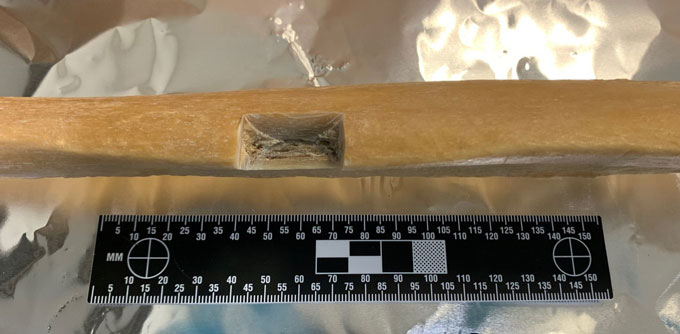This post was originally published on this site
In a quiet laboratory beyond the decomposing remains on a body farm in Huntsville, Texas, Noemi Procopio works carefully with her drill.
With each cut she makes into human bones, Procopio removes minuscule amounts of material, collecting some in a tube. That precious powder holds clues to when its donor died and the person’s age at death.
Popular television shows like CSI: Crime Scene Investigation and its spin-offs may make it seem easy to work out a person’s time of death. But many methods, such as analyzing insects that colonize a corpse (SN: 11/18/08), don’t work for remains that are mostly bare bones. Estimating time since death for skeletal remains currently relies on inspecting the bones for their degree of weathering — a rather subjective measure.
It’s not uncommon for analysts to reach different conclusions for the same bones, says Procopio, a forensic scientist and molecular biotechnologist at Northumbria University in Newcastle, England.
Those difficulties inspired Procopio to look for proteins and other molecules in bones that could provide an objective, dependable way to clock time. She and her colleagues have already identified a handful of candidates. Now, in one of the largest studies of its kind, the team is tracking these timekeeping molecules and searching for others in the cadavers of more than 100 people.
There are a couple of ways that proteins in bones can be used to track time, Procopio has previously found. When certain proteins decay, one of their amino acids — the building blocks of proteins — loses a certain chemical group over months to years. These missing bits can clue researchers in to how long a protein has been decaying. Meanwhile, populations of proteins also change in composition after death.
Even after someone dies, there’s still chemistry going on in the body, says Glendon Parker, a biochemist at the University of California, Davis who is not involved in the work.
Proteomics, the study of the proteins in a cell, organ or other samples, has advanced over the last few decades and yielded new insights into basic biology, Parker says. Given the massive revolution taking place in the field, “it’s only a matter of time before that has an impact on forensic practice.”
Procopio started investigating how bones clock time several years ago, with piglets that had died naturally. She buried their bones and dug them up a year later to scrape off bone powder. An analysis of the powder revealed a link between the amount of a protein involved in bone mineralization and the piglets’ ages at death, the researchers reported in 2017 in the Journal of Proteome Research. Levels of this protein, called fetuin-A, decrease with age.
Procopio then moved on to humans. In a pilot study with four bodies, the abundances of several proteins in bones, including some that give bones their structure, decreased with time since death, her team reported in 2021 in the same scientific journal.
Procopio’s latest and largest endeavor, part of a U.K. Research and Innovation Future Leaders Fellowship, is ongoing. Her team is sampling the shinbones of 120 cadavers at three body farms in Texas and Tennessee. These people who donated their bodies to science have been dead for a couple of months to several decades.

In addition to surveying protein candidates and searching for other potential protein timers in bones, Procopio’s team is on the lookout for other types of molecules, such as small ones that result from proteins degrading. Together, these molecular clues may give researchers a more accurate and detailed picture of exactly how long a body has been dead and in what sort of environment.
Procopio hopes to eventually incorporate the markers she finds into a computer model or equation that estimates time since death. Such a tool could someday help resolve the world’s backlog of unidentified bodies. In the United States alone, some 4,400 unidentified bodies turn up each year, and 1,000 of those remain anonymous after one year, according to the Department of Justice.
The body count is “massive,” Procopio says. “Most of [the bodies] are found in a condition in which they can’t be identified” using current techniques, she says.